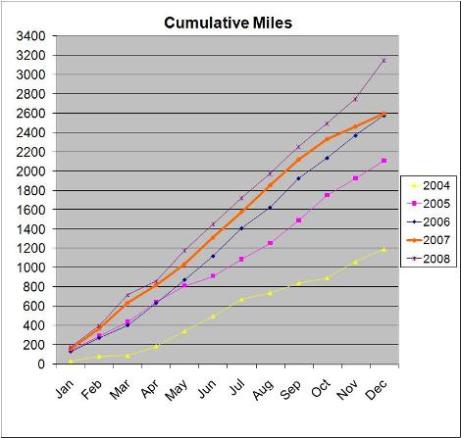Well, I’ve been lucky for the past couple years to avoid injury. Looks like I have one that will take some time to fully recover from. About a month ago or so, while jumping off a rock, descending a trail in the dark, I rolled my ankle inward. It seemed minor and I’ve only felt a little pain now and then. But after my 50-mile race a week ago, I noticed bad pain in the foot. I was stupid and ran the race in shoes that had too many miles on them. The foot seemed to heal during the next week, so I tried to run a tough trail marathon on Saturday. Within 100 yards the foot twisted in the mud and after 10 miles I was limping and pulled out of the race.

The next day (today) I could hardly walk, and couldn’t without a big limp. What is strange it that there is no noticeable swelling and no bruising. The source of the most pain seems to be what is called the peroneal tendons. One common cause is “running on uneven surfaces.” Hmmm…OK, I do that just a bit. “It can result from running on sloped surfaces or running in shoes with excessive wear on the outside of the heel.” Yep, I checked the shoes, they are worn out, probably 500 miles. Caused when “foot and ankle are rolled inward,” Yep that happened pretty bad about a month ago or so. I didn’t appreciate this wise crack: “In general, older people are at a higher risk of developing the condition.” Older? Come say that to my face. Let’s race up Timp and see who is old. Treatment, “Cease any activity that is likely to hinder the rehabilitation process.” Ya, ya, ya, I know. “It may take 6 weeks or longer to recover.” Yikes, don’t say that! How to prevent this from happening again, “When running, choose level surfaces and avoid rocks or holes.” Pretty funny. Next thing you will tell me is stick to running on roads. It’s not going to happen.
You have got to love the psychology of an injured runner. We have visions of never being able to run without pain again. We see someone jogging in the neighborhood and get very jealous. We worry that just a few days without training will get us out of shape. All are silly thoughts. Healing will take place, just be patient.
My next race is a road race, the Ogden Marathon in 20 days. It wouldn’t kill me to miss that race, but I don’t want to miss Squaw Peak 50 in 41 days. I still need to do a bunch of hill training for that race.
On 4/30 I went to the podiatrist. My self-diagnosis was correct. I have a peroneal tendon strain on the outside of my foot. He took an X-ray and there is not stress-fracture. The doctor gets a kick out of listening to my running history. A young college intern was with him today and the kid couldn’t belive what I was saying, talking about 100-mile races. The doctor as a former runner gets it and knows I understand foot-care, injury recovery, etc. He says I really need six weeks of recovery. He gave me a boot to help the tendon rest and an ankle brace to use once I start running again. I mentioned the marathon in 16 days and didn’t realize that I said, “its only a road marathon.” They both laughed, pointed out what I said. He said that was up to me, but I would likely be hurting after it, setting back the healing. But he quickly said, “I know you understand how to care and treat things like this.” So, my plan is to still run in the Ogden Marathon, but I won’t enter Sapper Joe 50K which is the following week. Instead I will volunteer for it if they need it. That will give me three weeks of more recovery until Squaw Peak 50.
5/2 Update
I now feel very little pain in the foot when walking. This past week I have really stepped up the cross-training. Today I swam two miles in the pool without much difficulty. I haven’t swam in over a year but my swimming endurance quickly was found again. I swam a total of 5.5 miles this week and did a bunch of pool running. My cardio endurance is getting stronger. I now can do toe-lifts without pain. Things are looking up. I think the Bonneville Shorline run last Saturday set my recovery back about 8 days. I’ve almost caught up to that.







